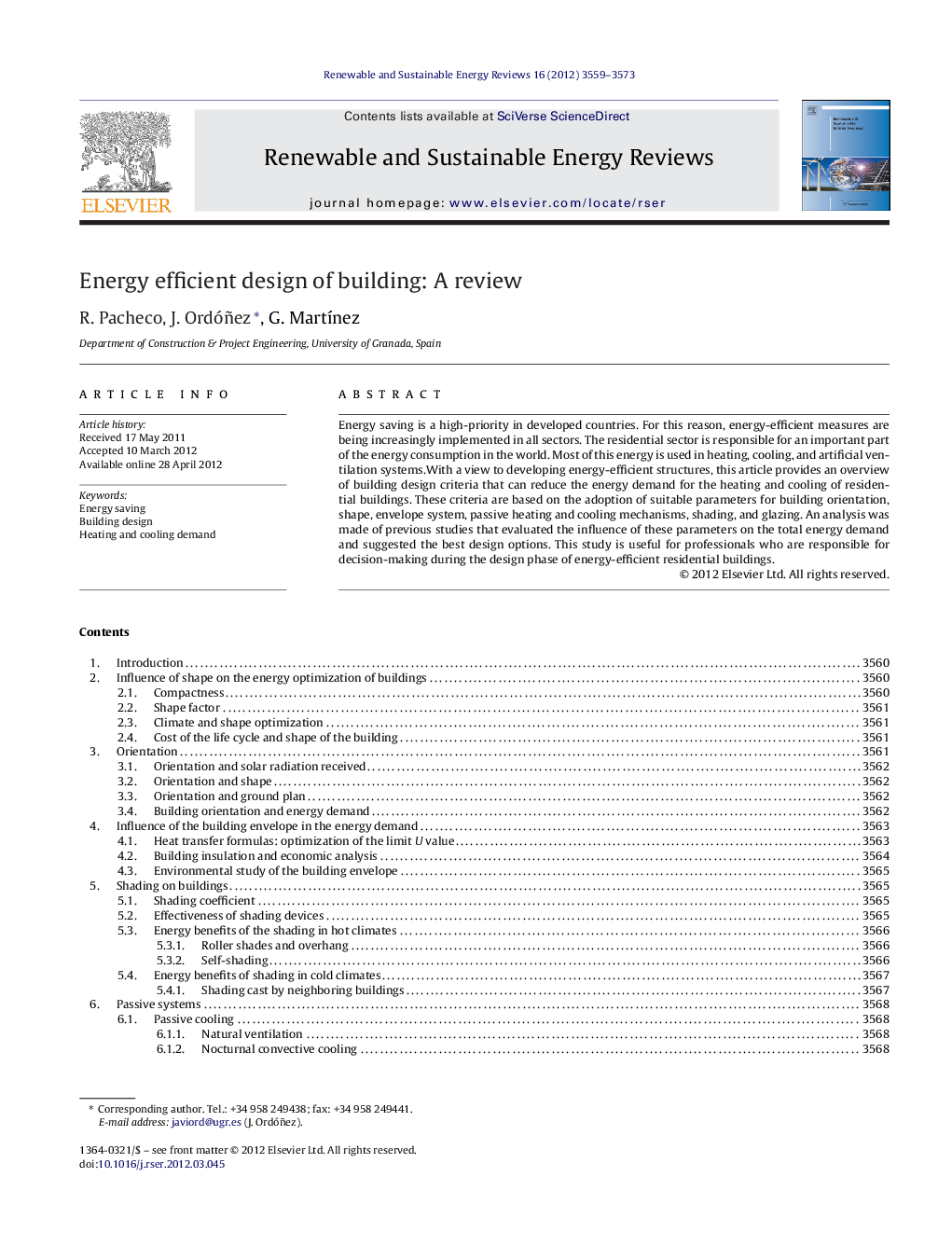| Article ID | Journal | Published Year | Pages | File Type |
|---|---|---|---|---|
| 10689831 | Renewable and Sustainable Energy Reviews | 2012 | 15 Pages |
Abstract
Energy saving is a high-priority in developed countries. For this reason, energy-efficient measures are being increasingly implemented in all sectors. The residential sector is responsible for an important part of the energy consumption in the world. Most of this energy is used in heating, cooling, and artificial ventilation systems.With a view to developing energy-efficient structures, this article provides an overview of building design criteria that can reduce the energy demand for the heating and cooling of residential buildings. These criteria are based on the adoption of suitable parameters for building orientation, shape, envelope system, passive heating and cooling mechanisms, shading, and glazing. An analysis was made of previous studies that evaluated the influence of these parameters on the total energy demand and suggested the best design options. This study is useful for professionals who are responsible for decision-making during the design phase of energy-efficient residential buildings.
Related Topics
Physical Sciences and Engineering
Energy
Renewable Energy, Sustainability and the Environment
Authors
R. Pacheco, J. Ordóñez, G. MartÃnez,
